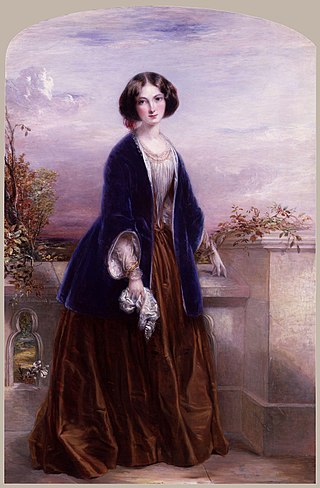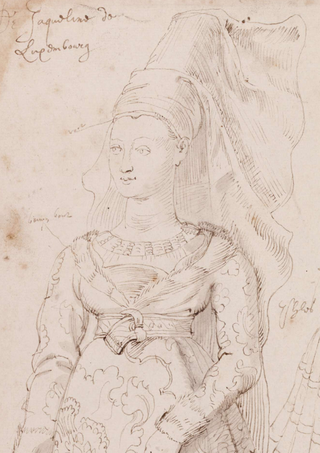
The House of Tudor was an English and Welsh dynasty that held the throne of England from 1485 to 1603. They descended from the Tudors of Penmynydd, a Welsh noble family, and Catherine of Valois. The Tudor monarchs ruled the Kingdom of England and the Lordship of Ireland for 118 years with five monarchs: Henry VII, Henry VIII, Edward VI, Mary I and Elizabeth I. The Tudors succeeded the House of Plantagenet as rulers of the Kingdom of England, and were succeeded by the Scottish House of Stuart. The first Tudor monarch, Henry VII, descended through his mother from the House of Beaufort, a legitimised branch of the English royal House of Lancaster, a cadet house of the Plantagenets. The Tudor family rose to power and started the Tudor period in the wake of the Wars of the Roses (1455–1487), which left the main House of Lancaster extinct in the male line.

Euphemia Chalmers Millais, Lady Millais was a Scottish artists' model and writer who was married to Pre-Raphaelite painter John Everett Millais. She had previously married the art critic John Ruskin, but she left him with the marriage never having been consummated; it was subsequently annulled. This famous Victorian "love triangle" has been dramatised in plays, films, and an opera.

Mary Aline Siepmann CBE, known by the pen name Mary Wesley, was an English novelist. During her career, she was one of Britain's most successful novelists, selling three million copies of her books, including ten bestsellers in the last twenty years of her life.

Jacquetta of Luxembourg was a prominent figure in the Wars of the Roses. Through her short-lived first marriage to the Duke of Bedford, brother of King Henry V, she was firmly allied to the House of Lancaster. However, following the emphatic Lancastrian defeat at the Battle of Towton, she and her second husband Richard Woodville sided closely with the House of York. Three years after the battle and the accession of Edward IV of England, Jacquetta's eldest daughter Elizabeth Woodville married him and became queen consort of England. Jacquetta bore Woodville 14 children and stood trial on charges of witchcraft, of which she was exonerated.

"The Wife of Bath's Tale" is among the best-known of Geoffrey Chaucer's Canterbury Tales. It provides insight into the role of women in the Late Middle Ages and was probably of interest to Chaucer, himself, for the character is one of his most developed ones, with her Prologue twice as long as her Tale. He also goes so far as to describe two sets of clothing for her, in his General Prologue. She calls herself both Alyson and Alys in the prologue, but to confuse matters, these are also the names of her 'gossip', whom she mentions several times, as well as many female characters throughout The Canterbury Tales.

The Age of Innocence is a 1920 novel by American author Edith Wharton. It was her eighth novel, and was initially serialized in 1920 in four parts, in the magazine Pictorial Review. Later that year, it was released as a book by D. Appleton & Company. It won the 1921 Pulitzer Prize for Fiction, making Wharton the first woman to win the prize. Though the committee had initially agreed to give the award to Sinclair Lewis for Main Street, the judges, in rejecting his book on political grounds, "established Wharton as the American 'First Lady of Letters'". The story is set in the 1870s, in upper-class, "Gilded Age" New York City. Wharton wrote the book in her 50s, after she was already established as a major author in high demand by publishers.
Catherine Roxburgh Carswell was a Scottish author, biographer and journalist, now known as one of the few women to take part in the Scottish Renaissance. Her biography of the Scottish poet Robert Burns aroused controversy, but two earlier novels of hers, set in Edwardian Glasgow, were little noticed until their republication by the feminist publishing house Virago in 1987. Her work is now seen as integral to Scottish women's writing of the early 20th century.
The Lonestar Legacy were a trilogy of books written by Pastor Gilbert Morris, they are set in the early-mid 19th century in Texas and mix both fiction with non-fiction.

The Camomile Lawn is a 1984 novel by Mary Wesley beginning with a family holiday in Cornwall in the last summer of peace before the Second World War. When the family is reunited for a funeral nearly fifty years later, it brings home to them how much the war acted as a catalyst for their emotional liberation. The title refers to a fragrant camomile lawn stretching down to the cliffs in the garden of their aunt's house.

Cecilia Loftus was a Scottish actress, singer, mimic, vaudevillian, and music hall performer in the late 19th and early 20th centuries.

Strange Interlude is a 1932 American pre-Code drama film directed by Robert Z. Leonard and released by Metro-Goldwyn-Mayer. The film stars Norma Shearer and Clark Gable, and is based on the 1928 play Strange Interlude by Eugene O'Neill. It is greatly shortened from the play: the stage production lasts six hours and is sometimes performed over two evenings, while the film runs for two hours.
Ida Julia Pollock was a British writer of several short-stories and over 125 romance novels that were published under her married name, Ida Pollock, and under a number of different pseudonyms: Joan M. Allen; Susan Barrie, Pamela Kent, Averil Ives, Anita Charles, Barbara Rowan, Jane Beaufort, Rose Burghley, Mary Whistler and Marguerite Bell. She sold millions of copies over her 90-year career. She has been referred to as the "world's oldest novelist" who was still active at 105 and continued writing until her death. On the occasion of her 105th birthday, Pollock was appointed honorary vice-president of the Romantic Novelists' Association, having been one of its founding members.

The Vacillations of Poppy Carew (1986) is a novel by Mary Wesley. The title refers to the protagonist's inability to choose in life. However, when Poppy Carew's boyfriend leaves her, and her father dies, she is forced to make a decision and to learn how to deal with life on her own.

A Dubious Legacy (1992) is a novel written by the British author Mary Wesley. The story takes place in the West Country, England, from 1944 to 1990. It concerns the tragic and bizarre marriage of the Tillotsons and their relationship with two young couples who keep visiting them throughout the years.

Second Fiddle (1988) is a best-selling novel by British author Mary Wesley.

Worth Winning is a 1989 American romantic comedy film directed by Will Mackenzie and starring Mark Harmon, Madeleine Stowe and Lesley Ann Warren. It was written by Josann McGibbon and Sara Parriott, based on the novel by Dan Lewandowski.

True Confessions of a Heartless Girl is a 2002 novel by Canadian author Martha Brooks, her seventh novel for young adults. It received the 2002 Governor General's Award for English-language children's literature.

The Camomile Lawn is a television adaptation of the 1984 book of the same name by Mary Wesley, produced by Glenn Wilhide and Sophie Balhetchet at ZED Ltd for Channel 4, directed by Peter Hall. It was adapted from Wesley's novel by Ken Taylor and first broadcast in 1992. It was nominated for the BAFTA TV Award for Best Drama Serial in 1993.
Hercules Langford Rowley PC was an Irish politician and landowner.















